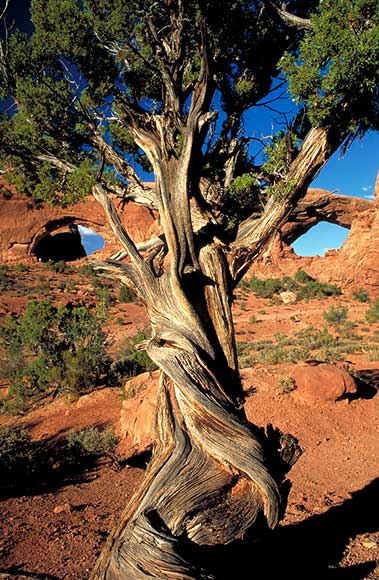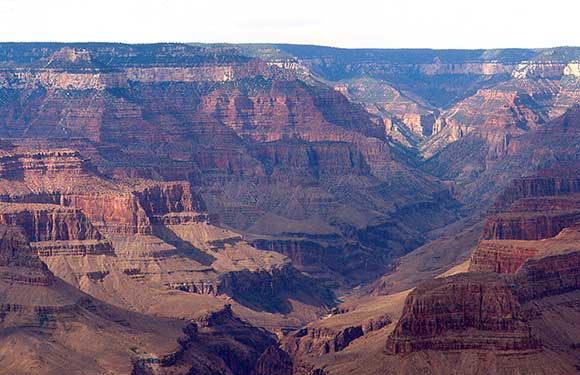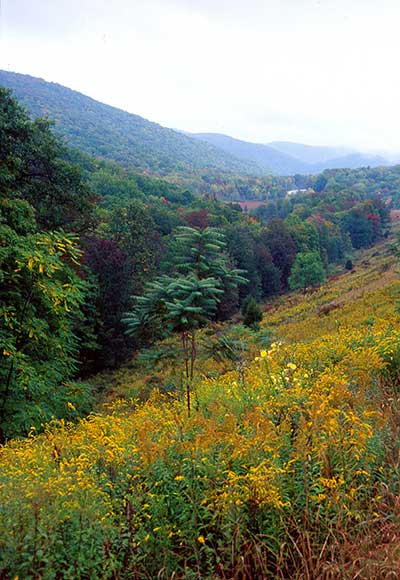You are here: Nature Science Photography – Visual acuity – Image sharpness III
Figure 50 (Image low sharpness impression) has only a few sharply defined edges and therefore appears slightly blurred and boring. Exactly the opposite is the case in figure 51 (Image great sharpness impression). There are many well-defined edges; the image is not at all boring and creates a greater impression of sharpness in comparison. From this comparison, we can learn that the often invoked „getting close“ leads to better (sharper, more varied) images because you automatically have more well-defined edges and boundaries in the image than if you are far away and use only a medium focal length. Another way to help figure 51 (Image low sharpness impression) is to include a sharply focused foreground object. This enhancement works for all shots of distant landscapes, as the two images of the Grand Canyon in figures 52 and 53 show.




Physiologically, however, not all objects and their edges are the same. Consider figure 54 (Image landscape without sharp edges) and figure 55 (Image landscape with sharp edges). Both show a landscape lying distantly in the haze. Although the lush green in the foreground of figure 54 appears sharper than the background, the red and orange leaves in figure 55 speak to us even more strongly and help the image to have a sharper impression. This works not only because the colors themselves are more attractive, but also because our visual system resolves them at a physiologically higher level. In the chapter „Our Preference for warm colors“ in „The perception of lightness and color“ we saw that the visual pits in our eyes (fovea centralis, that point on the retina with which we see most sharply) are exclusively populated with receptors that are sensitive to the medium and long wavelengths of the spectrum. For this reason, while green is not inherently bad, the perception of sharpness is enhanced by yellow and red objects and edges, as we are able to resolve them at a higher resolution than other objects due to the presence of these receptors in the fovea centralis. Therefore, regardless of the measurable resolution of a lens, film, or image sensor, we perceive an image as sharper when it includes these parts of the subject than when it does not, and this allows us to salvage almost any hazy landscape shot.


Next Greater edge sharpness through “sharp development”
Main Visual acuity
Previous Greater edge sharpness thanks to better shooting technique
If you found this post useful and want to support the continuation of my writing without intrusive advertising, please consider supporting. Your assistance goes towards helping make the content on this website even better. If you’d like to make a one-time ‘tip’ and buy me a coffee, I have a Ko-Fi page. Your support means a lot. Thank you!


 Since I started my first website in the year 2000, I’ve written and published ten books in the German language about photographing the amazing natural wonders of the American West, the details of our visual perception and its photography-related counterparts, and tried to shed some light on the immaterial concepts of quantum and chaos. Now all this material becomes freely accessible on this dedicated English website. I hope many of you find answers and inspiration there. My books are on
Since I started my first website in the year 2000, I’ve written and published ten books in the German language about photographing the amazing natural wonders of the American West, the details of our visual perception and its photography-related counterparts, and tried to shed some light on the immaterial concepts of quantum and chaos. Now all this material becomes freely accessible on this dedicated English website. I hope many of you find answers and inspiration there. My books are on